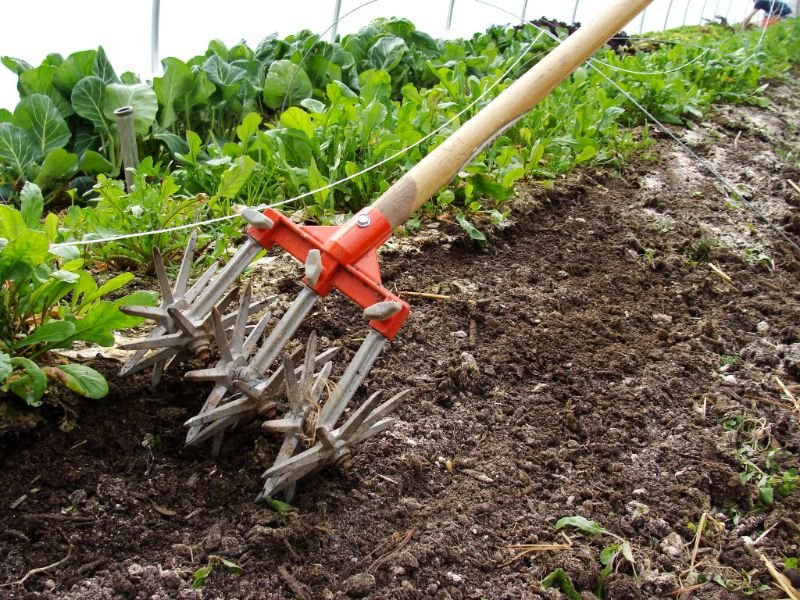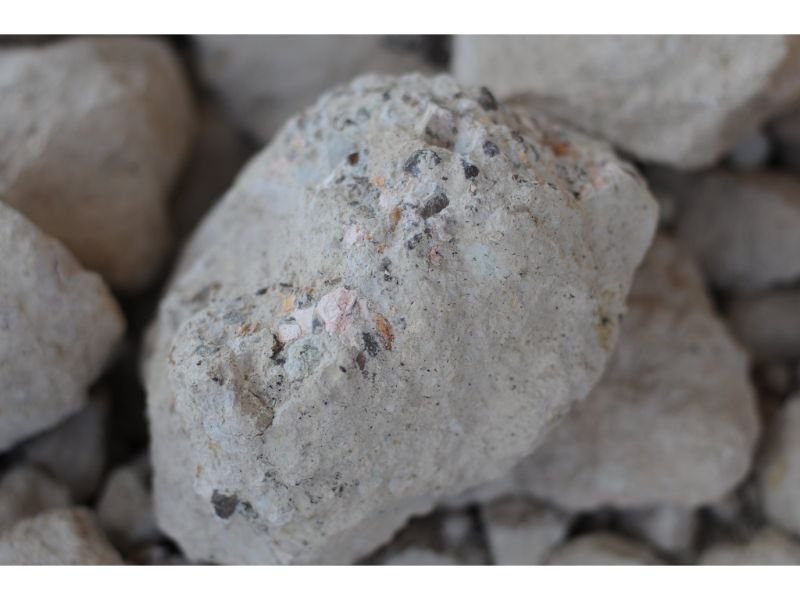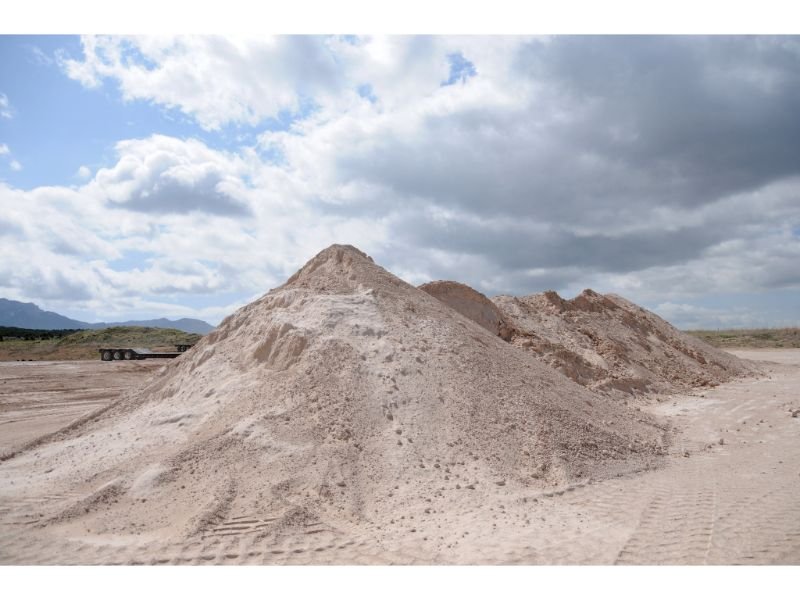Sea-90 and Azomite are both mineral supplements commonly used in gardening and agricultural practices. To optimize soil health and plant nutrition, gardeners must understand the differences. So let’s join us in the exploration of Sea-90 vs Azomite, including their distinct characteristics, mineral compositions, and potential applications–to achieve that goal of a thriving landscape.

Table of Contents
Comparing Sea-90 vs Azomite: Which Mineral Supplement Provides Better Plant Nutrition?
Before we move to the main topic, we need to understand what makes Sea-90 and Azomite different from each other.
Sea-90

Sea-90, as the name implies, is a mineral supplement derived from seawater. It contains various minerals and trace elements, including calcium, magnesium, potassium, zinc, iron, sulfur, and many others. Other than being used to remineralize soil and promote healthy plant growth, Sea-90 can also be used as a livestock supplement to enhance their nutrition.
Azomite

On the other side, Azomite is a naturally occurring volcanic rock dust that also contains a diverse array of minerals and trace elements. It is mined and composed of several mineral deposits such as silica, calcium, iron, potassium, magnesium, and many others. Azomite has similar uses to Sea-90, where it is commonly used as a soil amendment to help balance the mineral levels and enhance the plant’s growth. Like its rival, Azomite can also be used as a mineral supplement for livestock.
The Comparison
Now we move into the main topic. So between Sea-90 and Azomite, which one provides the best plant nutrition?
The choice between Sea-90 and Azomite depends on factors including soil conditions, crop type, and desired nutrient balance. Due to its marine origin, Sea-90 provides a wide array of nutrients that is naturally balanced and tends to be absorbed quicker by plants. Azomite, nonetheless, also contributes to soil fertility and plant health. However, the mineral composition of Azomite may vary depending on its source.
The Sea-90 vs Azomite War: Which One is the Best for Hydroponics?

Hydroponics keeps gaining popularity among plant enthusiasts, thanks to its space-saving and soilless method. This trend leads more growers to seek the best mineral supplements for the sake of their plant’s health, and as you can name it, Sea-90 vs Azomite is among the lists. And the good answer is, when it comes to hydroponic systems, Sea-90 and Azomite are both equally beneficial for plants. These mineral supplements can even be used together, as Sea-90 and Azomite complement each other.
Sea-90 makes an ideal supplement that promotes healthy plant growth and enhances overall vigor in the hydroponic system. Meanwhile, Azomite offers a different mineral profile that can enhance nutrient uptake and root growth. Sea-90, nonetheless, closely aligns with the natural nutrient requirements for hydroponic plants. To better go side by side with Sea-90, we recommend that gardeners use water-soluble Azomite, such as Ultra Fine Azomite Powder.
The Application Method of Sea-90 vs Azomite
Overall, the application method for both Sea-90 and Azomite may vary slightly but is pretty straightforward. Being naturally water-soluble, Sea-90 can be applied through irrigation systems, including drip irrigation systems. This allows the mineral contents to be more efficiently distributed to the foliage or root zone. We highly recommend gardeners use Sea-90 during the active growing season.
As for Azomite, its rock minerals are more suitable to be applied by mixing them into the planting’s soil or top-dressed around the matured plants. The best time to apply Azomite is before planting or during soil preparation to allow enough time for the minerals to be available to feed the plants.
Can Sea-90 and Azomite Be Substitutes for Fertilizers?

Perhaps, you might have seen either Sea-90 or Azomite being marketed as organic fertilizers or mineral fertilizers. But are these mineral supplements can be categorized as fertilizers? If so, is it safe for gardeners to use Sea-90 and Azomite rather than the classic N-P-K plant food? Which one between Sea-90 vs Azomite can be used as one?
Although Sea-90 and Azomite can be considered substitutes for traditional fertilizers in certain contexts, they are not part of traditional fertilizers and thus, should not completely replace one. This is mainly because both Sea-90 and Azomite provide essential minerals and trace elements that are different from conventional fertilizers.
The nutrient booster that we know usually provides essential macronutrients such as nitrogen, phosphorus, and potassium in specific ratios. They’re specially made to address plants’ nutrient deficiency and enhance their growth. Sea-90 and Azomite, on the other hand, are more about mineral supplements or amendments that are not typically found in these conventional fertilizers.
Luckily, Sea-90 and Azomite can be used in conjunction with traditional fertilizers to promote plant growth. By combining these mineral supplements with fertilizers, gardeners can create more comprehensive nutrients for their plants.
Natural Minerals Battle: Azomite vs Diatomaceous Earth

Sea-90 vs Azomite is not the only battle in town. If you’re a plant fanatic, you might have heard, or maybe tried, Diatomaceous Earth (DE). Diatomaceous Earth is derived from fossilized remains of diatoms, mainly microscopic algae with silica. Azomite and Diatomaceous Earth, however, offer different benefits for plants.
Diatomaceous Earth is known for its ability to control pests by dehydrating and disrupting their exoskeletons, but it is also not water-soluble like Azomite. It is best applied as a powder directly to plants or the surrounding soil. When used together with Azomite, these two can be a perfect match. While Azomite enriches the soil with minerals, Diatomaceous Earth will help gardeners to protect their precious plants from pests.
But it’s worth noting that Diatomaceous Earth is mainly applied as a powder on top of the soil, while Azomite is generally applied as a soil amendment.
Why Rock Dust Does Not Work?
Sea-90 and Azomite can be categorized as rock dust or rock minerals, despite being derived from different sources. It’s highly effective as a soil amendment, but sometimes, unluckily, plant enthusiasts might find that they’re not working as we wish them to be. So what’s the problem here?
Gardeners need to know that the effectiveness of both Sea-90 and Azomite can vary depending on various factors. First, it’s highly advisable to check the existing nutrient balance in the soil. If the soil already contains sufficient levels of minerals that are present in Sea-90 and Azomite, then additional supplements may not result in noticeable improvements.
Next, soil pH, organic matter content, and microbial activity also play a huge role. If these factors are not conducive, the plants may struggle to fully utilize the minerals provided by both products. Plants also have specific nutrient requirements that vary depending on their species and growth stage. Sea-90 and Azomite, despite being rich in minerals, may not provide sufficient levels of nutrients required by certain plants.
Sea-90 vs Azomite: Who’s the Ultimate Winner?
To ring down the curtain, there’s no loss between the war of Sea-90 vs Azomite. Both mineral supplements excel in their unique way and can be safely used side by side to enhance plant growth. However, Sea-90 and Azomite are different in certain ways. Sea-90 is derived from seawater, water-soluble, and can be used in hydroponics or drip irrigation systems. Azomite, which is made of volcanic ash, tends to not be water-soluble and is best used as a soil amendment.

New author in the hood. Loves gardening and flowers are my spirit animals (yes I know they are not animals but I insist). I will be covering most of the flowers’ topics here and occasionally random though as well.






